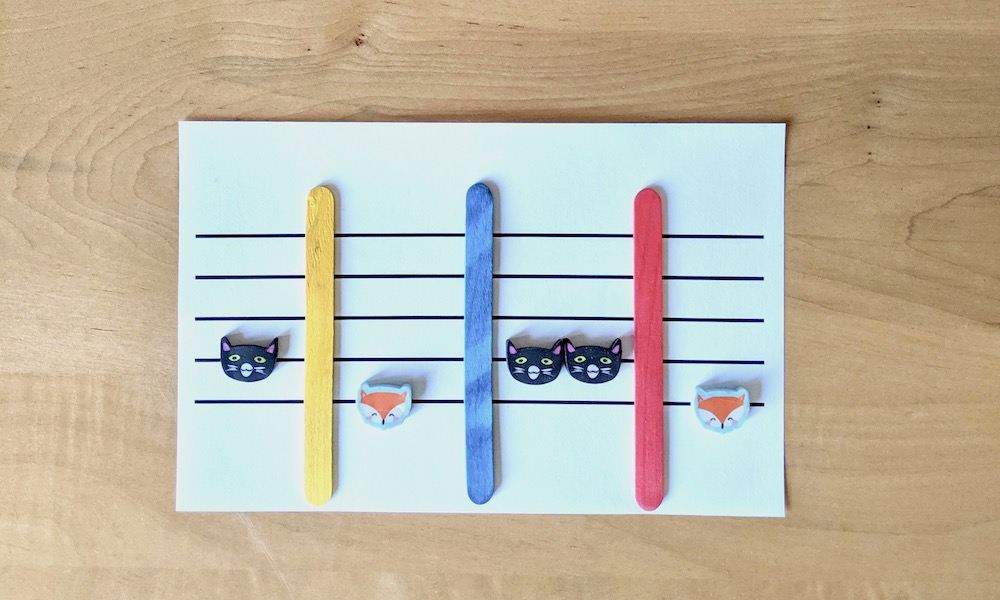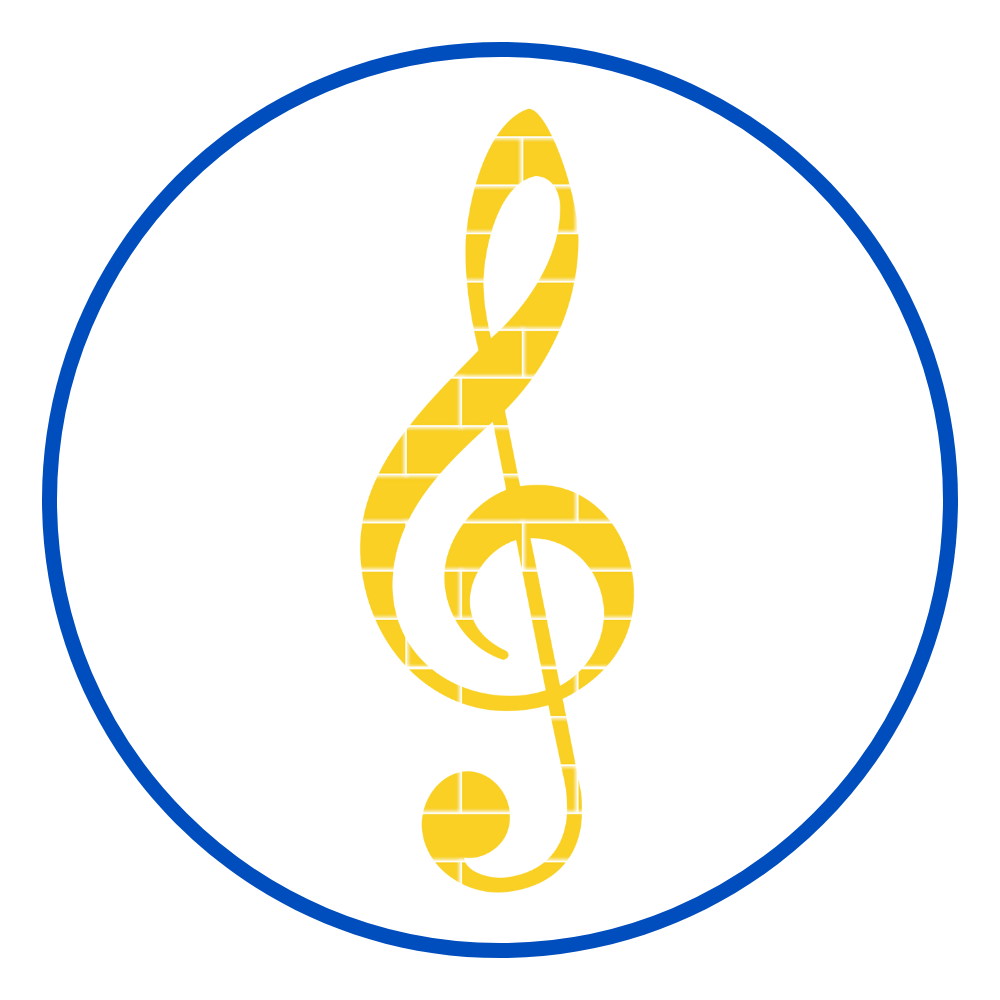As an adult, seesaws appear fairly harmless. But as a kid, I distinctly remember the goal of seesaw being how high you could bounce your unsuspecting partner. This activity hit a fever-pitch when the school added tires under the seesaws to soften the landing.
They quickly realized that the tires weren’t so much “softening the landing”, as creating extra propulsion for flinging our friends into the air. Had students been involved in these plans, perhaps the adults would’ve been aware of our true seesaw goals.
I’m not sure how this story relates to music, but I think it’s important to include students in your classroom plans. They have important ideas to offer, even if some are a bit dangerous…
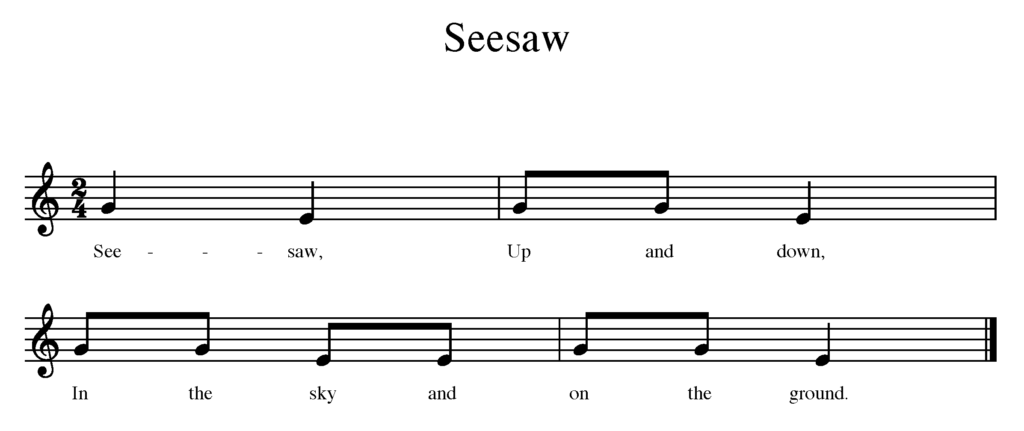
MOVEMENT
There are multiple ways to create movements using this song. As always, invite your students to create their own movements for this song. Here are just a few of my ideas:
- Have students stand up with their hands in the air on the first beat and crouch down on the second.
- Have students use Curwen Hand Signs (or body signs) as they sing.
- Have students pair up. Then, have each grab the opposite side of a hula hoop. They’ll raise it high on beat one, and lower it to the ground on beat two. For groups of three, one student can be in the middle of the hoop and follow the movements as they go up and down.
- Use a stretchy band and have your class move up on beat one, and down on beat two as they sing.
PITCH
After having your students move in several different ways, they will begin to both see and feel the pattern (high/low). You can reinforce this by playing Boomwhackers™ or Orff instruments. I find colored notation to be helpful when playing instruments.
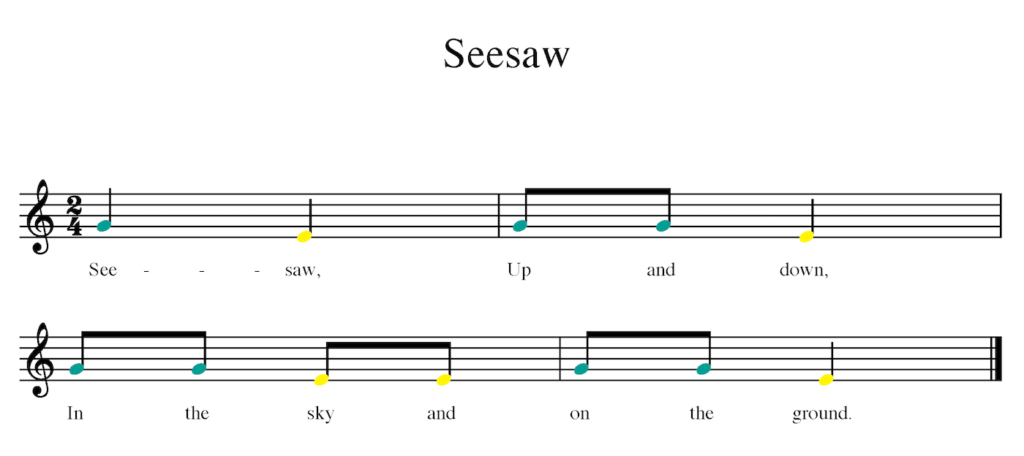
MANIPULATIVES
One struggle I noticed when using manipulatives, is that students don’t always space their objects from left to right. Sometimes, they would create melodies where the objects were stacking on top of each other.
One way to counter this, is to not introduce manipulatives before students are fluent in those pitches. In short, they should be able to aurally identify those pitches, sing those pitches, and compose short melodies with those pitches before we have them write or read them. We wouldn’t ask a child to read or write a word that they’ve only used once. Children have plenty of practice hearing those words and creating new sentences out of them, long before they’re asked to read or write them.
However, even with fluency, students can have trouble with spacing their manipulatives. One way to counter this, is to create beat blocks. You can do this by using beat strips, like the one shown below:
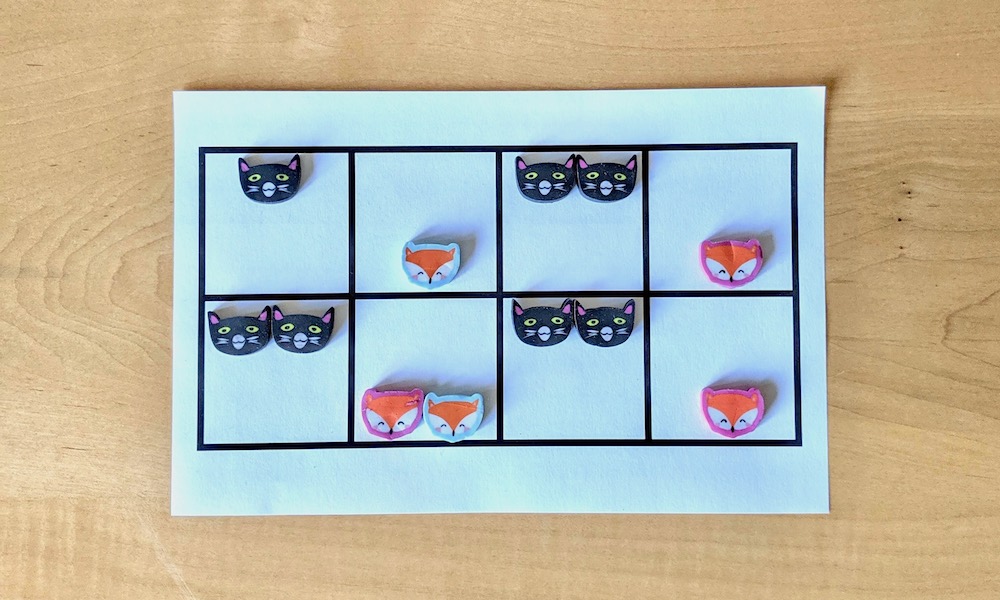
Or you can have students place popsicle sticks to show each beat on staff paper. Then remove the sticks when they’re finished.
